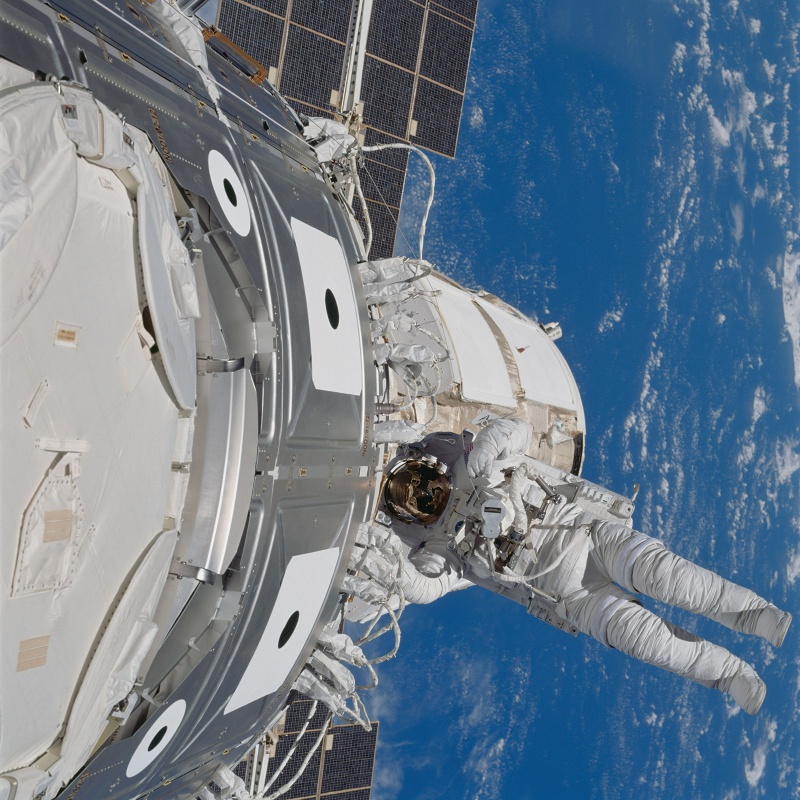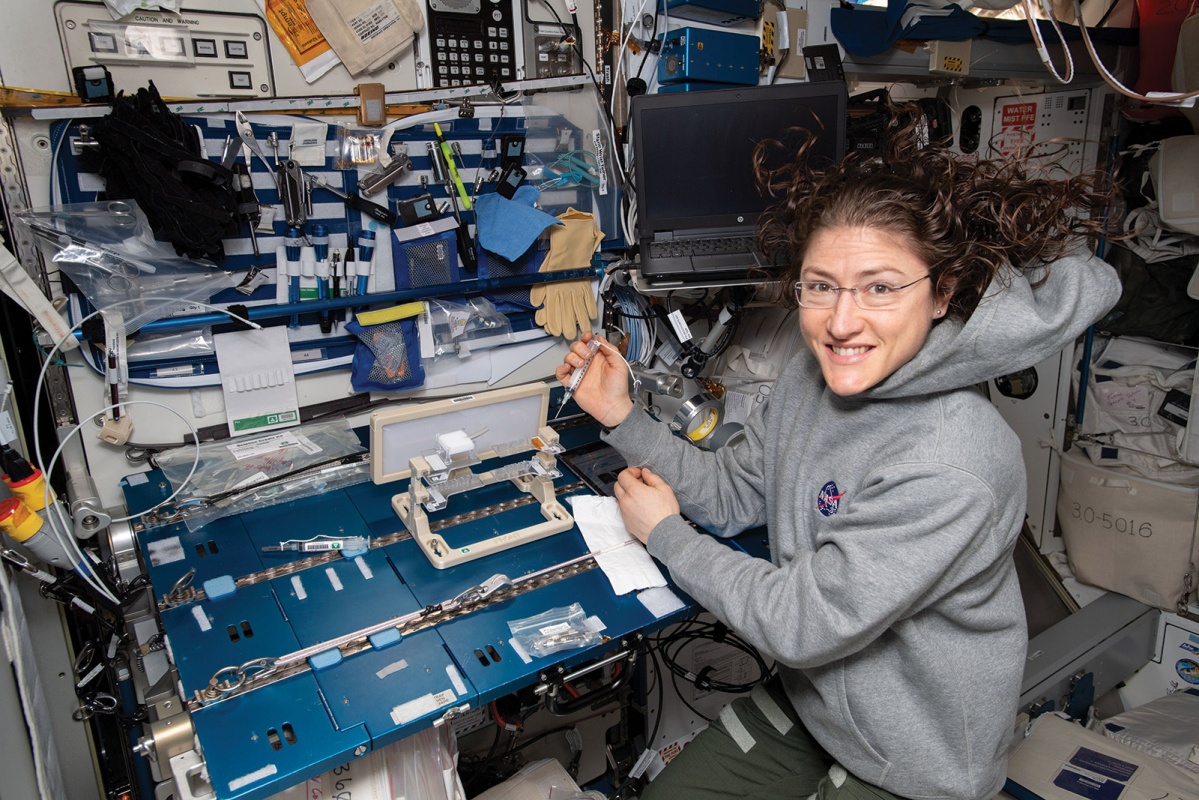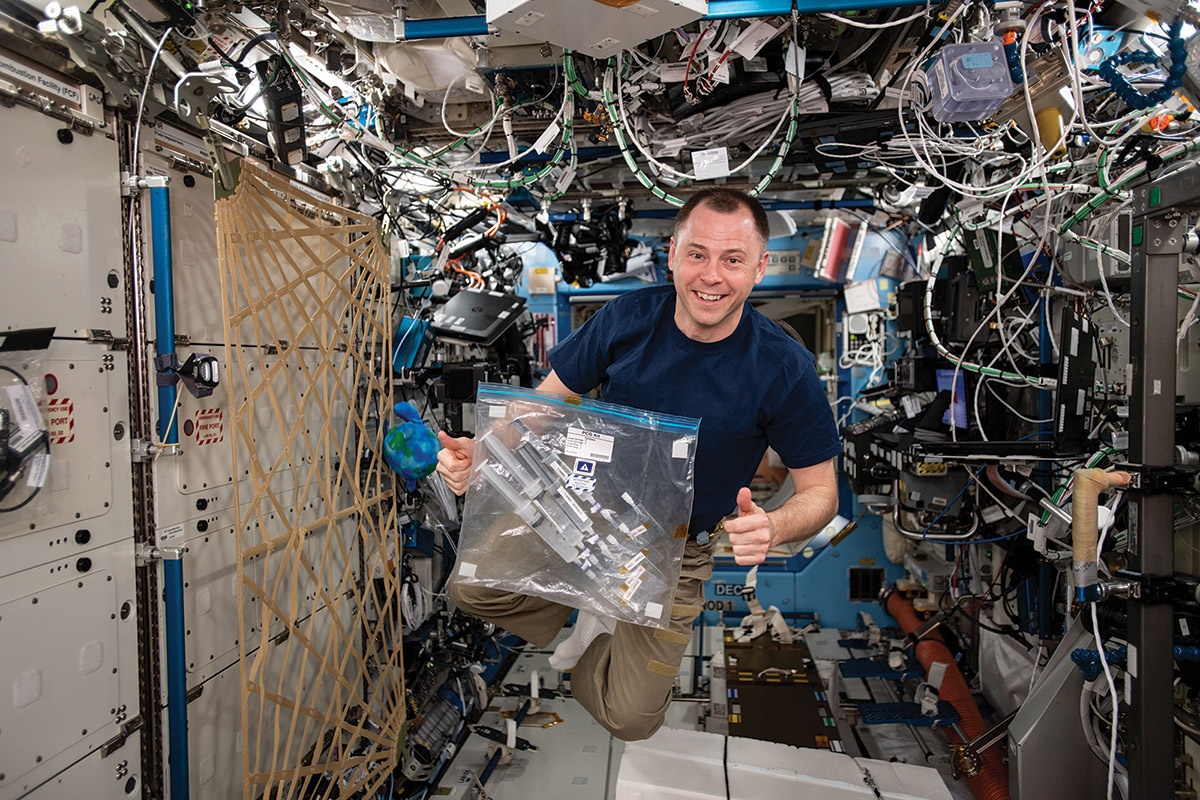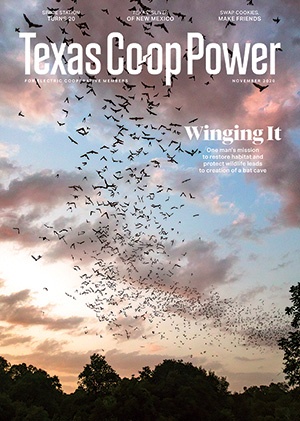If you or someone you know recently underwent laser eye surgery, the surgeon likely used technology developed on the International Space Station to track eye movements of astronauts. Surgeons needed a way to follow eye position that doesn’t interfere with the procedure, and the space technology proved ideal. The equipment is now used in corrective eye surgeries worldwide.
The space station, the only microgravity laboratory in our known universe, enables research that cannot be conducted anywhere else. As of November 2, scientists have used the orbiting lab continuously for 20 years, conducting more than 2,700 experiments.
All of this science—and in fact every aspect of the space station—is managed at Johnson Space Center, established in 1961 in southeast Houston. Flight control teams of engineers, medical officers and technicians remain on duty there 24/7/365 for the space station.
“I’m not sure people understand what goes on in Mission Control,” says John-David Bartoe, who flew on the space shuttle for the U.S. Naval Research Laboratory in 1985 before spending 20 years, starting in 1993, as the space station’s research manager. “No astronaut on the station is sitting at a console with a stick flying the space station. That all happens in Mission Control. They are actually controlling the mission.
“People in the space station program office make decisions every day on how to make this thing work,” Bartoe says. “No one had ever done this before, and the brains behind making this thing happen are right there at JSC.”
Bartoe says that when he arrived at Johnson Space Center, his goal was to interest the scientific community in using the space station, which was difficult because it did not yet exist. “We took the philosophy of ‘build it and they will come,’” he says, “and turned out it worked.”

James H. Newman works outside the space station.
Nasa.gov
Every single astronaut who has flown to the space station—more than 240 people so far—trained at the Houston facility.
Research on the space station has contributed to a variety of medical advances in addition to the eye-tracking technology. People soon may be able to receive treatments for some types of cancers via a simple injection rather than intravenous infusion, and studies in space contribute to development of medicines targeting specific cancers, muscular dystrophy, Alzheimer’s and other diseases. Advances that help with osteoporosis, stiffening of the arteries and other symptoms of aging spring from research to help protect astronauts from bone loss and cardiovascular problems they can experience in space.
Scientists study colloids, which are mixtures of various particles in a liquid, to create more effective and longer-lasting products. Shampoo, laundry detergent and salad dressing are examples of colloids. On Earth, colloids are hard to study because gravity causes heavy particles to sink and lighter ones to float, but in microgravity, that problem goes away, leading to advances we see on store shelves.

Christina H. Koch conducts a capillary structures experiment.
Nasa.gov
Anheuser-Busch has tested germination and malting of barley on the space station to learn how the grain can be altered to improve its use in brewing, distilling and food production. Goodyear Tire has conducted studies to help produce more fuel-efficient tires, and Adidas uses the space station to research improvements in the process of making insoles.
Agriculture and land management benefit from space station research, too. Farmers can monitor water use with thermal infrared measurements taken of Earth’s surface from the space station, and another instrument indicates how much carbon is stored in forest canopies.
Equipment on the space station also supports disaster monitoring and responses on Earth. Crew members on the space station can adjust sensors in real time in response to natural disasters such as volcanic eruptions, earthquakes, flooding and tsunamis—something satellites cannot do—and relay valuable information to scientists on Earth. Night images taken from the space station help responders check the restoration of electric power after a disaster. Images also help monitor the spread of wildfires and the path of storms so earthbound experts can guide evacuations and rescue operations or the deployment of firefighters.
Researchers in Texas take advantage of the space station for their own work. Larry Kramer, an academic radiologist at the University of Texas Health Science Center in Houston, is working on a study with the Cardiovascular and Vision Laboratory at Johnson Space Center that looks into how space travel affects vision and the brain.
“Vision problems are a major problem for NASA to solve, something they have to worry about as flight duration becomes longer and they contemplate travel to Mars,” Kramer says. “I had experience and was in the right place at the right time.”
The team at Johnson Space Center continually plans experiments, and NASA is flooded with proposals from people wanting to conduct research on the space station, Bartoe says. “A long time ago, the executive director of a national science organization said that research in microgravity is of micro-importance. I think we have clearly proven him wrong.”
Melissa Gaskill writes about science, the environment and nature. Read more at melissagaskill.blogspot.com.


